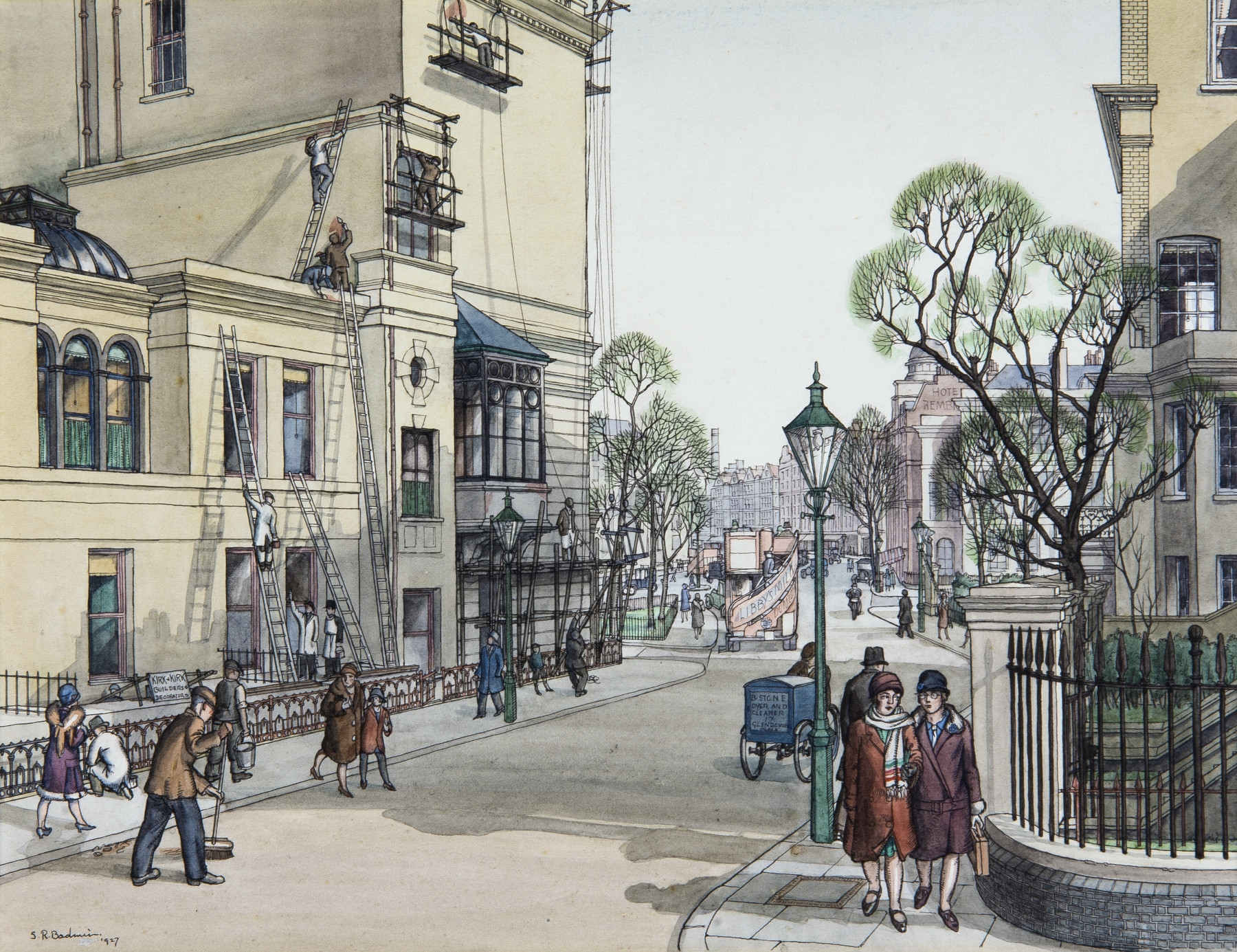
(click image to enlarge)
The seven large houses that originally comprised Cromwell Gardens were designed by Alfred Williams and built by John Spicer in the 1860s. Though impressive, the heavy traffic that developed around them made them far less attractive by 1912. At that date, they were purchased by the Office of Works, so that they could make way for a new Royal College of Art. That plan never materialised and, in 1920, the houses were leased to the Institut Français and its attached Lycée (the French School of Badmin’s title). Over the following decade, these institutions outgrew the site and, in 1936, they moved into purpose built premises further west along the Cromwell Road. The plot was then purchased as the location for a National Theatre to be designed by Sir Edwin Lutyens and Cecil Masey, architect of the Phoenix Theatre. However, the Second World War delayed construction and, in 1942, an agreement was drawn up in which the Kensington site was exchanged for a newer, less restrictive site on the South Bank of the Thames. Cromwell Gardens was then used to house advertising hoardings, and later a car-hire depot and a pre-fabricated office. Then, in the 1970s, the land was secured by Mawlana Hazar Imam for the establishment of the first Ismaili Centre in the Western world, as a religious, social and cultural meeting place for British members of Ismailism, one of three branches of Shia Islam. It was designed by the Casson Conder Partnership, which included Sir Hugh Casson, nephew of the actor and director, Sir Lewis Casson, who had been a member of the committee for the National Theatre that was to have been built on the same site. It opened in 1985.